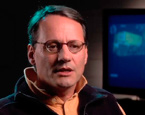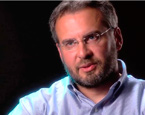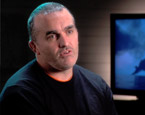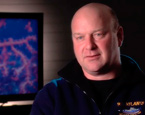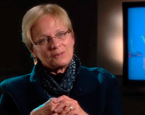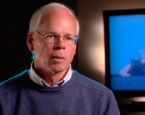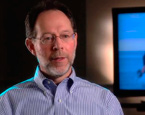2. How Much Oil?
In the early weeks after the explosion, estimates of how much oil was pouring into the Gulf varied from 1,000 barrels a day to 35,000 barrels per day. Getting a reliable figure was crucial, to help BP figure out what went wrong, and for federal agencies to understand what they were up against in terms of cleanup, remediation, and potential damage to Gulf ecosystems.
WHOI scientist Rich Camilli and engineer Andy Bowen drew on their long experience with instruments designed to work at great depths. With colleagues at several other institutions, they applied two acoustic technologies that had been used in other contexts in the deep ocean. Both work by sending out “pings” of sound and then listening for the reflected echoes. The echoes change depending on the density and speed of the particles they reflect off.
The first instrument, an Acoustic Doppler Current Profiler (ADCP), measures the speed of moving fluids. ADCPs have been mounted on moorings to monitor ocean currents and on bridge abutments to track river flow rates. At Deepwater Horizon, it measured the speed of the material gushing out of the broken wellhead.
A second acoustic device, an imaging sonar similar to a medical ultrasound, is so sensitive to materials of different density that it can distinguish a plume of hot water within an area of cold water. At the Deepwater Horizon site, it could readily discern the boundary between the gas/oil mixture and the surrounding seawater. It was used to measure the cross-sectional area of the jet gushing out of the broken pipe.
Combining the cross-section of the jet with its velocity, Camilli and Bowen’s team produced an estimate of how much material was spewing into the Gulf. When their work showed a flow rate higher than estimates based on other techniques, the team went over their calculations again and again. But they had been thorough: They had taken more than 16,000 measurements of jet speed and nearly 2,600 measurements of cross-sectional area of the jet. They were confident that their numbers were good.
The scope of the disaster was beginning to come into focus.
WHOI personnel in this video (in order of appearance):

Stephanie Murphy
Public Information Manager

Bob Nelson
Petroleum geochemist
